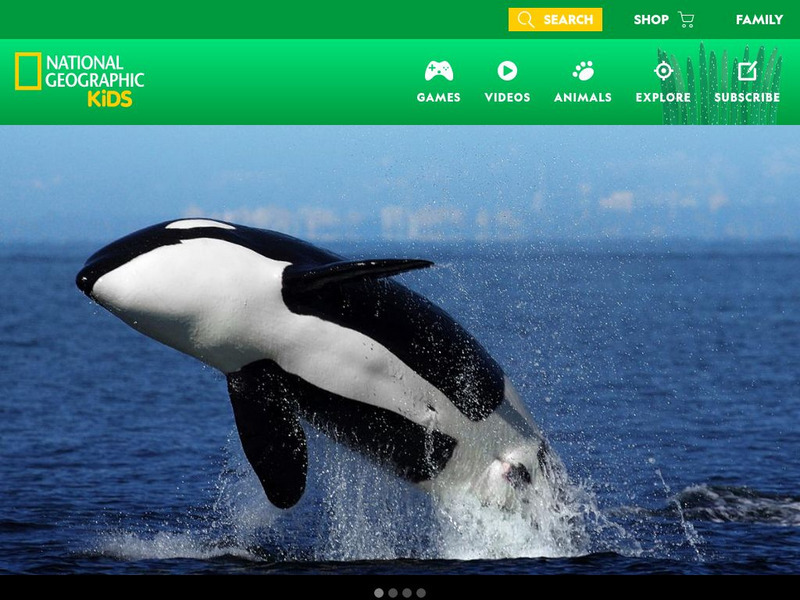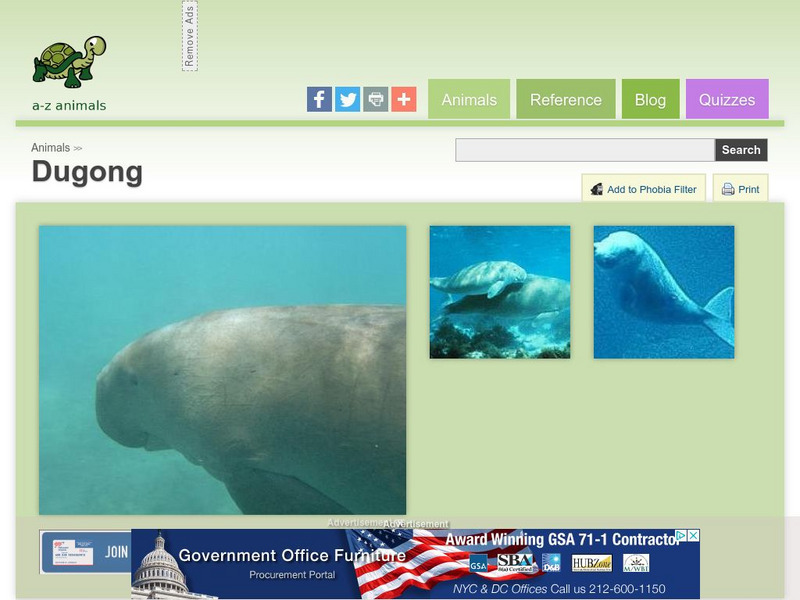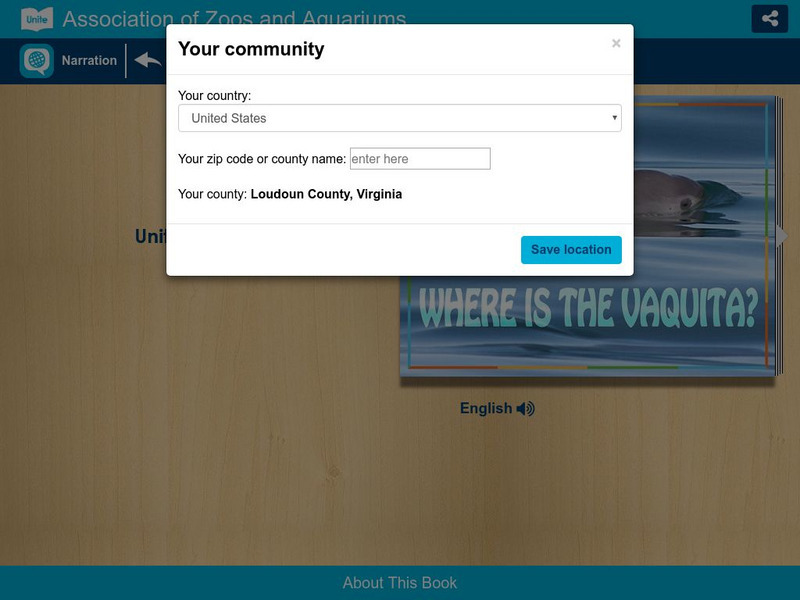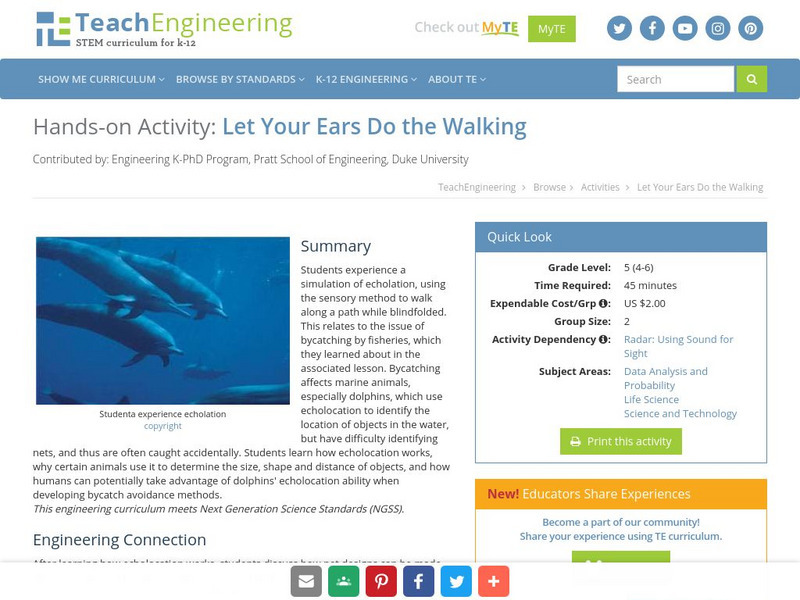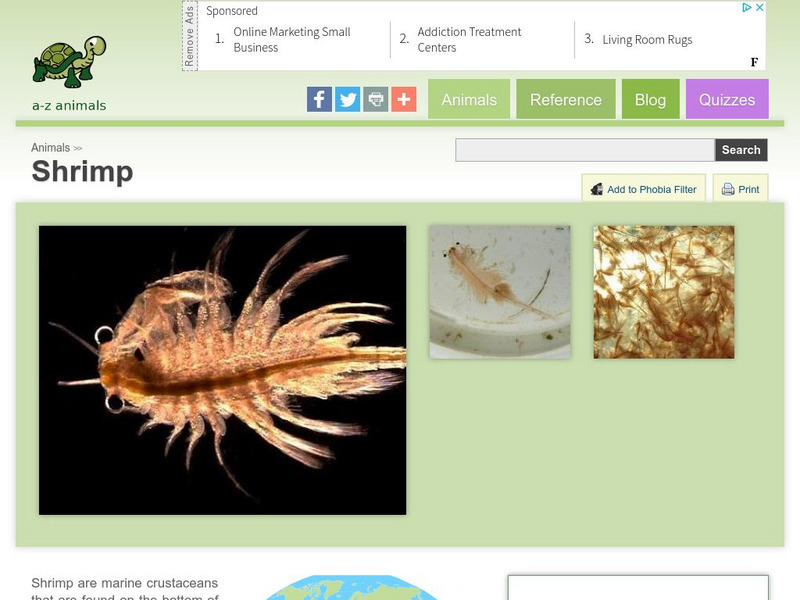Smithsonian Institution
Smithsonian National Zoo
Here is the National Zoological Park right at our fingertips. Students will find many things to explore at this colorful and engaging site. Any study of animals will have a successful start here. Chances are students can catch their...
National Geographic Kids
National Geographic Kids: Animals: Jellyfish
Take an exciting look at the jellyfish! Easy to read facts including habitat, physical appearance, movement, diet, enemies, as well as colorful photos. Click on the menu tab to view a video clip of this floating creature.
National Geographic Kids
National Geographic Kids: Animals: Orcas
Orcas, more commonly known as killer whales, are featured on this multimedia site. These video clips, audio clips, photographs and facts will be very beneficial to students doing research projects.
Library of Congress
Loc: Poetry 180: Animals
This poet reflects on the happiness that animals bring to life.
A-Z Animals
A Z Animals: Animal Facts: Dugong (Dugong Dugon)
Explore images and facts about the Dugong, including details on its appearance, habitat, breeding, behaviour, and much more.
Ducksters
Ducksters: Fish for Kids: Learn All About Aquatic and Ocean Marine Life
Kids learn what makes up a fish. What are gills and how do they breathe in the water?
Smithsonian Institution
National Museum of Natural History: Ocean Planet
Detailed website that was a companion to a 1995 traveling exhibit of the Smithsonian. Links to lesson plans and other educational materials are at the bottom of the page. Enter the exhibition to explore the world of the ocean.
Unite for Literacy
Unite for Literacy: Saving Animals From Extinction: Where Is the Vaquita?
Learn some facts about the vaquita, a type of porpoise that is endangered. Book includes audio narration in English and Spanish with text in English.
Monterey Bay Aquarium
Monterey Bay Aquarium: Sea Otters
A resource that explores the otter's life at sea with emphasis on keeping warm, diet, social life, and mother and pup. A live cam is set up to view the sea otters. Other sites (Marine Mammals and Octopus's) can be accessed.
Next.cc
Next: Coral Reefs
Learn about the plants, animals and sea life that inhabit coral reefs by completing the five activities. Explore reefs further by clicking on one of the numerous links provided.
Read Works
Read Works: Ocean Animal Discovery
[Free Registration/Login Required] An informational text about the discovery of ocean animals. A question sheet is available to help students build skills in reading comprehension.
Sea World Parks & Entertainment
Sea World: Walrus
Walruses, members of the seal family of marine mammals, are profiled in detail with information about their classification, habitat, behaviors, and conservation. Other features include books for young readers.
TeachEngineering
Teach Engineering: Let Your Ears Do the Walking
In the previous lesson, students learned about the issue of bycatching by fisheries and how it affects marine habitats. Dolphins are one of the main species affected by bycatching. Dolphins use echolocation to identify the location of...
PBS
Pbs Nature: Dolphin
Explore the world of marine life through the eyes of dolphins when you visit this clear and concise resource. This site features information on where and how dolphins live and other fun facts. Teachers can use this type of site to help...
Ducksters
Ducksters: Animals for Kids: Invertebrates
What is an Invertebrate? Kids learn about these animals that have no backbone such as worms, mollusks, insects, and spiders.
A-Z Animals
A Z Animals: Animal Facts: Shrimp (Caridea)
Provides photographs and a fact card about shrimp. Discusses where they are found, the variety of species, diet, predators, reproduction, and their similarities and differences from prawns.
Other
Wet Web Media: Spiny Skinned Animals & Echinodermata
Site provides a general overview of echinoderms from the perspective of the marine aquarium enthusiast. Content includes a focus on physical characteristics, individual classes, and acquarium maintenance.
Unique Australian Animals
Unique Australian Animals: Great White Sharks
At this site from Unique Australian Animals you can meet the one of the most feared animals of the ocean, the Great White Shark. Learn what Great Whites are really like by reading their description at this web page.
Unique Australian Animals
Unique Australian Animals: Giant Australian Cuttlefish
The Unique Australian Animals site devotes a page with pictures and facts about the about the Giant Australian Cuttlefish.
Other
Whale Net: Satellite Tagging Data, Maps and Information
Information on what satellite tags are, how they work, and how they are used for research on whales. Also discusses several studies they have done using this equipment, and how this information can be used in conservation work. Great...
The Wild Classroom
The Wild Classroom: Biomes of the World: Coastal Ocean Biome
Learn about the coastal ecosystem. Find out about plants, animals, adaptations, and conservation efforts.
The Wild Classroom
The Wild Classroom: Biomes of the World: The Deep Sea Biome
Learn all about the abyssal ocean ecosystem. Find out about plants, animals, adaptations, and conservation efforts.
San Diego Zoo Global
San Diego Zoo: Manatee
This engaging resource from the San Diego Zoo provides extensive information on manatees including details about their habitat, physical characteristics, size, diet, family life, conservation status, and fun facts.
Boise State University
Boise State University: Ocean Exploration: Abyssopelagic (Abyssal) Zone
Learn about the very cold, dark region of the ocean known as the abyss. Includes information on the origin of the name of this ocean zone, as well as information on its depth and animal life.
Other popular searches
- Marine Animal
- Marine Animal Reproduction
- Marine Animal Taxonomy Game
- Marine Animal Games
- Marine Animal Adaptations
- Marine Animal Classification


